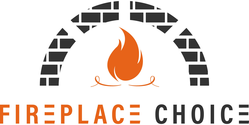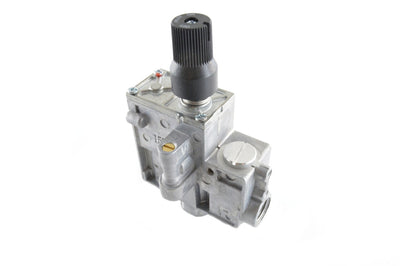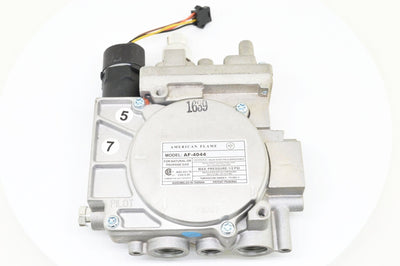Are gas fireplaces safe
Are gas fireplaces safe?
I know what you're thinking - safety concerns about your gas fireplace can be nerve-wracking, right? I completely get it! After diving headfirst into some thorough research and relying on my own experiences, I’ve discovered that if not properly maintained, a gas fireplace could indeed pose a risk for carbon monoxide poisoning.
In this article, we’re going to unravel the potential dangers related to gas fireplaces and arm you with practical tips for staving off these risks. Are you ready to ignite your understanding of fireplace safety?.
Key Takeaways
- Gas fireplaces give heat and look like traditional ones, but they need proper setup and regular check-ups to keep them safe.
- The main danger from a gas fireplace is carbon monoxide, a harmful gas we can't see or smell. It's important to have detectors in your home for this.
- A good venting system helps to keep the air fresh in your home when using a gas fireplace.
- Regular inspection of the fireplace, paying attention to signs of wear and unusual flame changes can help spot issues early on.
- If there are power outages, some types of gas fireplaces may not work because they need electricity.
- While setting up a gas fireplace costs money upfront, you save more over time because these are more energy-efficient than other types.
- Although you lose the wood aroma with a gas fireplace, it doesn’t emit smoke or ash which could be better for those with respiratory problems.
Understanding Gas Fireplaces
Gas fireplaces have become a common feature in many residential homes and commercial buildings, offering warmth without the hassle of wood-burning. They work by burning natural gas or propane to produce heat, mimicking the look and feel of traditional fireplaces without emitting smoke or ash.
This process involves an oxidation reaction where fossil fuels interact with oxygen, creating combustion. However, this convenience also comes with certain health risks if not properly installed and maintained.
The main risk associated with gas fireplaces is carbon monoxide poisoning - a colorless, odorless gas released during combustion that can be harmful if inhaled over time. According to the Centers for Disease Control and Prevention (CDC), exposure to high levels of carbon monoxide can lead to symptoms such as nausea, dizziness, shortness of breath, chest pain, headache and unconsciousness.
This significantly highlights the importance of incorporating safety measures around your home's gas fireplace including regular inspections and maintenance from licensed contractors and investing in effective smoke & carbon monoxide detectors endorsed by organizations like U.S. Consumer Product Safety Commission (CPSC) for enhanced home security.
The Pros and Cons of Gas Fireplaces
Gas fireplaces bring remarkable convenience and significant cost savings, but there's a trade-off - the absence of that comforting wood aroma. While they aren't affected by weather conditions, a power outage can turn them off; their upfront cost and maintenance needs are higher than traditional fireplaces.
Thus, choosing a gas fireplace entails balancing these pros against possible cons.
Convenience and cost
Gas fireplaces offer a remarkable fusion of convenience and cost-effectiveness. With just the touch of a button or flick of a switch, you can control your fireplace and enjoy instant heat.
No more time-consuming chores like gathering logs, chopping wood, or cleaning up ash; it's that easy.
In terms of money matters, gas fireplaces shine with their energy-efficiency which results in significant savings on heating bills over time. The upfront costs associated with equipment purchase and installation may seem steep at first glance but are offset by these long-term savings compared to traditional wood-burning fireplaces—just another way gas fireplaces prove their worth in residential homes.
Absence of wood aroma
Gas fireplaces offer a clean, efficient heat source that lights up at the press of a button. However, unlike traditional wood-burning fireplaces or open-hearth fireplaces, they lack the distinctive wood aroma many individuals associate with cozying up next to a roaring fire on cold days.
This absence of wood aroma is a trade-off for convenience and cleaner emissions that gas-burning fireplace users make. Experiencing the warm glow without the accompanying scent might feel unusual if you're used to classic fireplaces; however, for those with respiratory concerns or intolerance for smoke inhalation, this could be an advantage offering warmth and ambiance minus indoor air pollution.
Possibility of power outage effects
Power outages can significantly impact gas fireplaces, as they rely on electricity for functionality. Without power, electronic ignition systems might fail to ignite, leaving you without heat.
The absence of electricity also affects the operation of blower fans and controls that regulate temperature and flame intensity. Furthermore, remote controls and thermostats that require electrical power become useless in these situations.
However, not all hope is lost during a blackout; gas fireplaces with standing pilot lights continue to provide warmth even when there's no power.
Upfront cost and maintenance requirements
Installing a gas fireplace carries an upfront cost that could range from $2,700 to $5,800. This investment includes the unit itself as well as installation charges. But keep in mind, this isn't a one-time expenditure.
Owning a gas fireplace also necessitates regular upkeep for optimal performance and safety considerations. Your cozy hearth needs annual inspection and cleaning by licensed experts to prevent potential hazards like carbon monoxide leaks or fire risk.
Regular maintenance not only extends the longevity of your heating equipment but also safeguards you from unpleasant surprises during winter chills!
Addressing Safety Concerns
Understanding the potential risks, such as carbon monoxide poisoning, and ensuring adequate ventilation are vital in maintaining a safe gas fireplace in your home.
Risk of Carbon Monoxide Poisoning
Carbon Monoxide (CO) is a silent and deadly gas that you cannot see, smell or taste. Gas fireplaces, if not properly installed and maintained, can leak this toxic fume into your home.
Every year, over 400 Americans die from unintentional CO poisoning with many more hospitalized due to related health complications. Even minimal exposure to this potent gas can lead to serious harm such as damage to the nervous system and vital organs like the brain and heart.
Safety precautions are essential in homes with gas fireplaces. Regular safety checks help detect potential problems that could cause carbon monoxide leaks early on. It's also crucial to have your fireplace inspected annually by a licensed professional who can effectively assess any possible danger points within its structure and operation.
Properly functioning smoke detectors equipped with built-in carbon monoxide sensors further enhance safety measures by providing timely alerts when dangerous levels of poisonous gases are detected indoors.
Proper Ventilation Requirements
Proper ventilation is a crucial part of ensuring gas fireplace safety. The framework for this necessary safeguard comes in the form of professionally installed venting systems, designed to meet specific requirements based on the type of gas fireplace you own.
These systems work tirelessly to prevent hazardous carbon monoxide buildup in your home.
Yet installing an effective system is only half the equation. Maintaining your ventilation system is equal parts important. Even a small malfunction can lead to unwanted accumulation of gases and odors within your living space.
Furthermore, every room has unique characteristics such as ceiling height, insulation levels, and presence (or lack) of windows that influence how these systems should be implemented - presenting more factors that underline why professional assistance remains indispensable in this process.
Safeguarding Your Gas Fireplace
Ensuring the safety of your gas fireplace isn't difficult, but it requires regular attention. Start by scheduling routine inspections and maintenance with a licensed contractor. Investing in carbon monoxide detectors is essential for early detection of any potential leaks.
Recognize signs of a gas leak like strange odors or flickering flames to ensure quick action. Prioritize these steps to maintain maximum safety while enjoying your cozy, warm hearth.
Regular Inspection and Maintenance
Keeping your gas fireplace operating safely demands regular inspection and maintenance. Here are some steps you can follow:
- Ensure an annual check - up by a licensed professional. They will inspect and clean the unit, addressing issues that could pose a risk.
- Check for visible signs of wear and tear, such as chipped logs, cracks in glass or changes in flame color.
- Always keep the area around your fireplace clear to prevent accidental fires.
- Have your chimney swept at least once a year to avoid blockage and ensure proper venting.
- Regularly check the function of carbon monoxide detectors in your home to stay safe from potential poisoning.
- Keep an eye for symptoms of Carbon Monoxide Poisoning such as nausea, dizziness, shortness of breath, chest pain, headache, and unconsciousness.
Investing in Carbon Monoxide Detectors
Investing in carbon monoxide detectors is an essential safety measure for any home with a gas fireplace. With more than 100,000 Americans visiting the emergency room each year due to carbon monoxide-related incidents, having this detection device can be lifesaving.
- Purchase a High-Quality Detector: Not all carbon monoxide detectors are the same. Buy from reputable brands approved by bodies like the U.S. Consumer Product Safety Commission (CPSC).
- Install in Strategic Locations: Carbon monoxide detectors should be installed near every sleeping area and on each level of your home, including the basement and garage.
- Regular Maintenance: Test your CO detector monthly and change its batteries twice a year to ensure it's always working.
- Monitor Detector’s Health: Most detectors have a lifespan of 5-7 years. Replace your unit well within its expiry date to maintain protection against potentially deadly CO emissions.
- Connect to Your Security System: Some alarm monitoring and smart home security systems can connect with carbon monoxide detectors for seamless safety supervision. If you own such a system, syncing can provide extra assurance.
- Seek Professional Help During Installation: For utmost safety, consider having licensed experts install and test your new detector.
Understanding Signs of a Gas Leak
Gas leaks in fireplaces are a serious concern that every homeowner should be aware of. There are several signs that can indicate a potential gas leak in your fireplace.
- Black, sooty marks: Your fireplace covers can reveal much about its condition. If you notice black or sooty marks on them, it might suggest a gas leak.
- Sooty or yellow/brown stains: Keep an eye out for unusual markings near your gas appliances. Sooty or yellow/brown stains could signify leakage of gas.
- Smoke build-up: Another noticeable sign is the buildup of smoke in rooms, indicating improper venting and possible leakage.
- Flame color: One of the most apparent signs to look out for is the color of your flames. A healthy gas flame burns blue; if the flames from your gas fireplace turn yellow, it could mean there's a leak.
Gas Fireplace FAQs
In this section, we'll answer some of the most frequently asked questions about gas fireplaces, such as whether it's ok to leave a gas fireplace running overnight and how to determine if your fireplace is properly vented.
We will also discuss why you might be noticing an odor coming from your gas fireplace.
Can a gas fireplace be left on overnight?
Leaving a gas fireplace on overnight isn't the best idea. The risk increases due to potential exposure to carbon monoxide, an odorless, colorless and tasteless gas that can cause symptoms like nausea, headache, shortness of breath or even loss consciousness with prolonged exposure.
While it might seem convenient for added warmth or ambiance, this practice may pose serious risks.
Especially in case of ventless fireplaces which do not require a chimney or vent, there are increased safety concerns. These types of fireplaces are subject to bans in certain states because they can contribute significantly to indoor levels of carbon monoxide.
Consequently, it's highly recommended to turn off your gas fireplace before going to bed at night for safer use and peace of mind.
How to tell if a gas fireplace is properly vented?
Spotting visual cues is a practical way to determine if your gas fireplace is vented properly. If you see visible flame and there's minimal soot or buildup on the glass, it means your fireplace ventilation system works well.
Also, any strange odors should not go unnoticed as they could hint at problems in the venting process. A proper functioning venting system includes features like a flue or chimney which helps expel combustion byproducts safely out of your home.
Ensuring that these systems work optimally becomes easier with regular maintenance and professional inspections. Don't ignore these signals, as they can keep you safe while you enjoy the comfort of your gas fireplace!
Why might there be an odor from a gas fireplace?
Gas fireplaces can sometimes give off odors, and there are several potential causes for this. One common reason is poor ventilation which cannot effectively remove the combustion byproducts.
This situation may occur if the fireplace installation or venting was not properly done. Odor could also be a result of dirty burner ports since dust or debris could clog these areas over time, leading to an unpleasant smell when you use your fireplace.
On top of that, burning impurities in the gas like sulfur or other chemicals can cause an odor too. Lastly, the buildup of creosote - a hard dark residue formed from wood smoke - or soot in your chimney might be another source of bad smells.
It's vital to routinely clean and maintain your gas fireplace to prevent these issues and ensure it functions efficiently and safely at all times.
Conclusion
Gas fireplaces, when properly installed and maintained, provide a safe source of warmth and ambiance. Always remember to err on the side of caution; invest in regular inspections and effective carbon monoxide detectors.
Ultimately, your approach to safety will determine whether you can enjoy the benefits of a gas fireplace without worry.
FAQs
1. What are the safety measures for a gas fireplace?
The National Safety Council recommends professional Security Company like AsecureLife to conduct regular fireplace inspections and chimney sweeps, install CO alarms, follow local laws concerning indoor gas fireplaces, adhere to building codes and use protective screens.
2. Can ventless gas fireplaces cause harm?
Ventless or vent-free appliances can potentially lead to house pressure issues. They may release aldehydes and other evaporative chemicals into your home if not properly monitored with an oxygen-depletion sensor.
3. How can I ensure the proper maintenance of my gas fireplace?
Regularly check your propane tank, keep all flammable objects away from the fireplace temperature range area; clean dust, dirt, ash or soot present in the firebox using appropriate cleaning tools.
4. Does painting affect my gas log set in any way?
Yes! Paint on a newly installed gas log set may need off-gassing or curing time as recommended by Wellness Within Your Walls for good air quality inside homes before safely using it.
5. Are there devices that could help monitor safety around my fireplace?
Yes! Devices such as CO2 alarms, air monitors,purification devices,VOC monitoring devices and heat sensors like Heatilator's direct vent technology can be used.
6. Is anyone qualified to conduct these inspections?
Absolutely! Inspections should only be performed by licensed experts who refer to Fireplace Manufacturer’s Safety Instructions from Hearth Patio & Barbecue Association (HPBA).
← Older Post Newer Post →




























